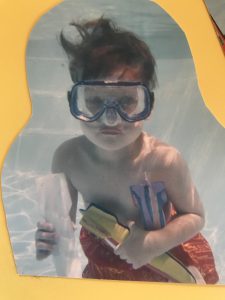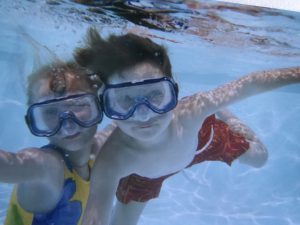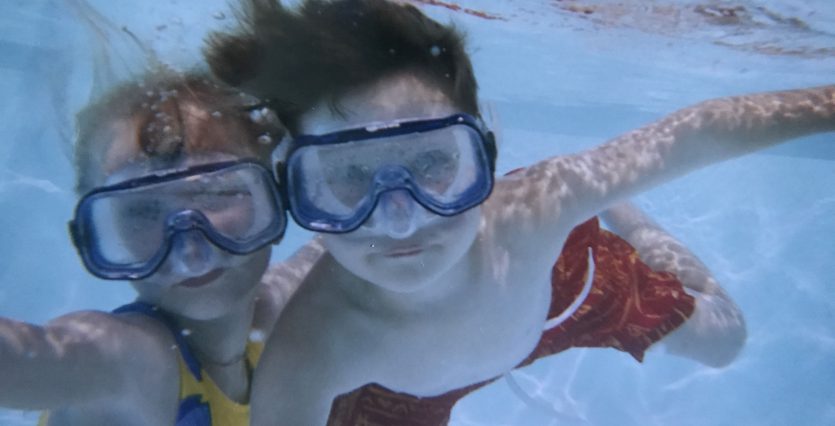
I have investigated more than 1,000 drowning events and have authored several peer review studies focusing on drowning behavior. Several of my studies involve children and dispelling some commonly held myths about drowning behavior. Focusing my research on children is justified because drowning among children represents the second leading cause of accidental death.
Ms. Deborah Tomlinson suffered the loss of her 6-year-old son, Christopher. He drowned in her backyard pool while wearing a diving mask that she had purchased in the toy section of a store at a local mall. She reports that when the mask flooded, her little boy began to panic. Panic behavior among children is usually subtle and often quiet, not the way that it’s usually represented by the media and depicted in the movies. (Fletemeyer 2008, 1992, 2018).
As dive instructors, we are taught that safe diving experiences begin with a properly fitting mask and then continue with learning mask- and snorkel-clearing skills. Without the benefit of a properly fitting mask, learning these skills becomes problematic.
Unfortunately, there are no reliable s tatistics related to this problem. When a fatal drowning occurs, the medical examiner seldom reports any contributing causes. Nevertheless, I am aware that this is not an isolated case. There have been other fatal and nonfatal drowning events involving children and inexpensive, improperly fitting diving masks.
tatistics related to this problem. When a fatal drowning occurs, the medical examiner seldom reports any contributing causes. Nevertheless, I am aware that this is not an isolated case. There have been other fatal and nonfatal drowning events involving children and inexpensive, improperly fitting diving masks.
In addition, all dive instructors teach about the danger of blackout from hyperventilating before submerging. Warnings are never found about this potentially lethal condition on the packaging of snorkels.
At first, it was hard for me to believe that this was a problem, but when I began visiting local stores selling children’s masks, my belief changed. Take, for example, my visit to a Dollar Tree store. I purchased a mask found in the middle of the toy section for $1.06. I purchased another mask at a Dollar General for $2.89. These masks were cheaply made of plastic, made in China, and their packaging was absent of any instructions or warnings. Especially alarming was that the two masks that I purchased were difficult to distinguish from a $70 mask for sale at a dive shop located only a block away.

Christopher’s drowning must serve to place the manufacturers of children masks and snorkels on notice that there is a serious problem that may lead to fatal drowning among children. In addition, it must serve to advise store management that diving masks and snorkels are not toys and therefore should never be located in their toy department.
Deborah and I are convinced that this is a time for dive and drowning organizations including the training organizations, Divers Alert Network, and the National Drowning Prevention Alliance (NDPA) to band together and pool their resources to address this problem before another little boy or girl drowns. Stores selling children’s masks and snorkels should remove them from the toy section, and manufacturers must provide warnings and education material on their packaging. In addition, the public must be educated that masks and snorkels are not pool toys and that a properly fitting mask is essential to ensure a safe and enjoyable swimming experience.
In response to her son’s drowning, Ms. Tomlinson is partnering with the NDPA to produce an educational video related to the circumstance responsible for his drowning. She invites the support and participation of the organizations referenced above including NAUI.
Recommendations and talking points:
- Remove masks and snorkels from the toy section of stores selling children’s equipment.
- Educate the public about the importance of wearing a properly fitting mask.
- Provide warnings about the inherent dangers associated with using a mask and snorkel (e.g., panic and blackout).
- Encourage toy and dive companies to only sell masks and snorkels approved and endorsed by the dive industry.
- Only allow children to use masks and snorkels following basic training and mastering skills.
- Always provide close and continuous supervision of a child while in and around the pool.
Contact John Fletemeyer at jfletemeyer@aol.com; phone: 954-463-9000
References cited:
Fletemeyer, J. 2008. “The Art and Science of Drowning Recognition,” Journal of Emergency Responder,
________. 1992. Drowning, New Perspectives in Intervention and Prevention. New Jersey and Boca Raton, CRC Press.
________. 2018. “Dispelling Myths about Drowning Behavior, Lights, Camera, Action! Aquatics International Magazine.


